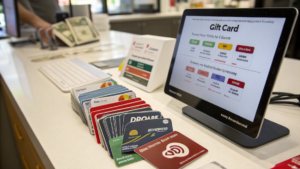Do Power Banks Really Deliver on Their Promises?
Always running on low battery, wishing for a quick charge? Many of us rely on power banks, but it's hard to know which one truly fits our needs. What if your next power bank actually exceeded your expectations?
Power banks can be incredibly effective at keeping your devices charged on the go, but their true performance hinges on understanding key specifications like mAh capacity and wattage output. Matching these features to your specific devices and usage habits ensures you get reliable and efficient power when you need it most.
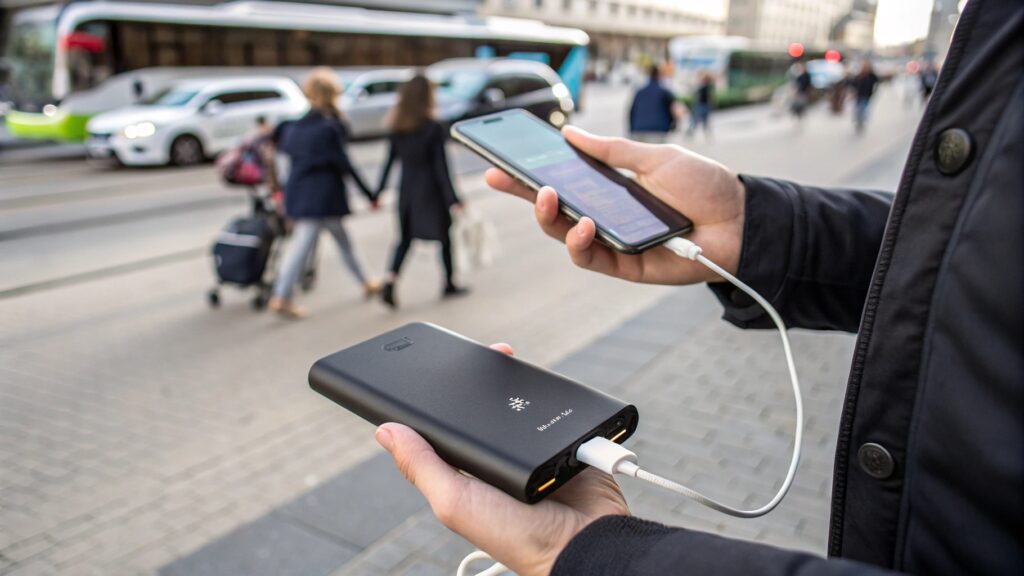
I remember countless times, stuck in a remote factory or at a client site, when my phone was about to die. Having the right power bank made all the difference between a missed call and a successful negotiation.
Is a 5000 or 10000mAh Power Bank Better?
Are you torn between a compact 5000mAh power bank and a larger 10000mAh one? It can be tricky deciding which capacity gives you the right balance of power and portability. So, which one truly offers more value for your daily needs?
The "better" power bank between 5000mAh and 10000mAh depends entirely on your charging frequency and device needs. A 5000mAh unit is great for quick top-ups and ultra-portability, while a 10000mAh power bank offers more charges for smartphones and can handle some tablets, making it more versatile for longer periods away from an outlet.
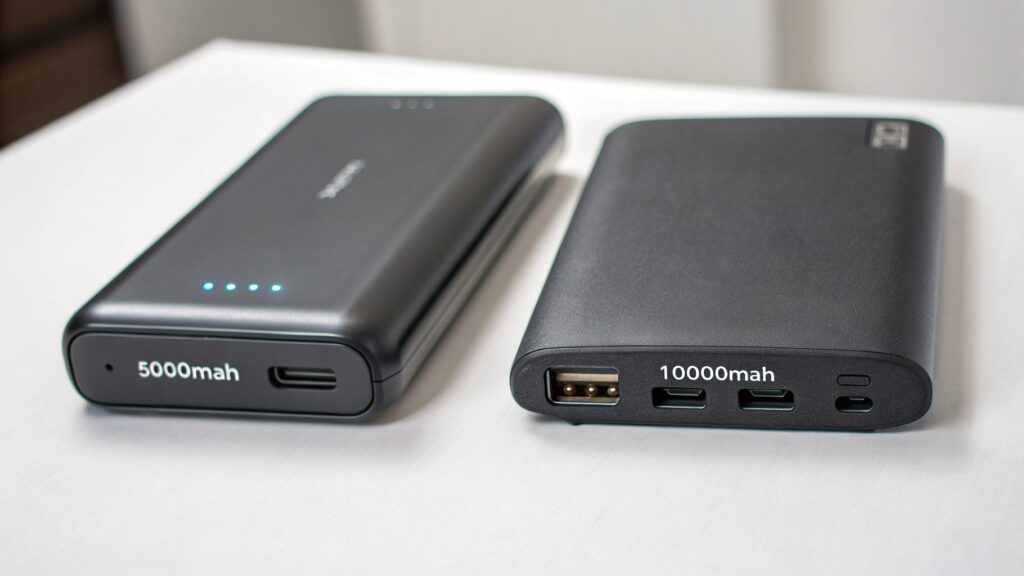
I have learned that selecting a power bank is like choosing the right tool for a job. A small screwdriver is fine for tiny screws, but you need a bigger one for tougher tasks.
What are the real-world charging capabilities of a 5000mAh power bank?
A 5000mAh power bank is generally good for light to moderate usage. For most modern smartphones, which often have batteries between 3000mAh and 4500mAh, a 5000mAh power bank1 can provide about one full charge. For example, if your phone has a 3500mAh battery, you might get one full charge and a little extra. For smaller devices like wireless earbuds or smartwatches, a 5000mAh power bank can recharge them multiple times. The key benefit here is portability. These power banks are typically very compact and lightweight. They fit easily in your pocket or a small bag. This makes them ideal for daily commutes or short outings where you just need a quick power boost. I personally find them handy for charging my earbuds during my morning walk. It means I do not have to worry about them dying halfway through my playlist.
How does a 10000mAh power bank compare for heavier usage?
A 10000mAh power bank offers double the capacity of a 5000mAh unit. This means it can charge most smartphones two to three times. If your phone has a 3500mAh battery, a 10000mAh power bank could potentially charge it nearly three times. For tablets, which have larger batteries (often 6000mAh to 10000mAh), a 10000mAh power bank can provide a substantial partial charge, sometimes even a full charge for smaller tablets. This capacity is better for heavier users, like those on business trips or who travel frequently. It reduces how often you need to recharge the power bank itself. While a 10000mAh power bank is slightly larger and heavier than a 5000mAh one, it still remains quite portable. I find this size perfect for a full day of client meetings. It keeps both my phone and my small tablet powered. This ensures I am always ready to present.
When should you opt for higher capacity power banks beyond 10000mAh?
For truly high-demand users, such as those traveling for extended periods, digital nomads, or individuals carrying multiple power-hungry devices like laptops, drones, or larger cameras, capacities above 10000mAh become necessary. Power banks in the 20000mAh to 30000mAh range can offer multiple charges for smartphones and even provide significant power to USB-C laptops2. These larger power banks are heavier and bulkier. They are not designed for pocket carry. They are best suited for backpacks or travel bags. They often come with higher wattage outputs too. This allows for faster charging of larger devices. I once needed to power a portable projector during an outdoor event. A 20000mAh power bank with a high output was essential. It kept the projector running without issue. This highlights how specific needs dictate capacity.
Is Higher Watts Better for a Power Bank?
Does buying a power bank with higher watts truly mean faster and better charging? It feels like a simple equation: more watts equals more speed. But is it always the right choice for your devices?
Higher wattage in a power bank generally means faster charging speeds, particularly for modern devices that support quick-charge technologies like USB-C Power Delivery. However, "better" depends on your device's compatibility and your actual charging needs; an older phone might not benefit from high watts, while a laptop absolutely will.
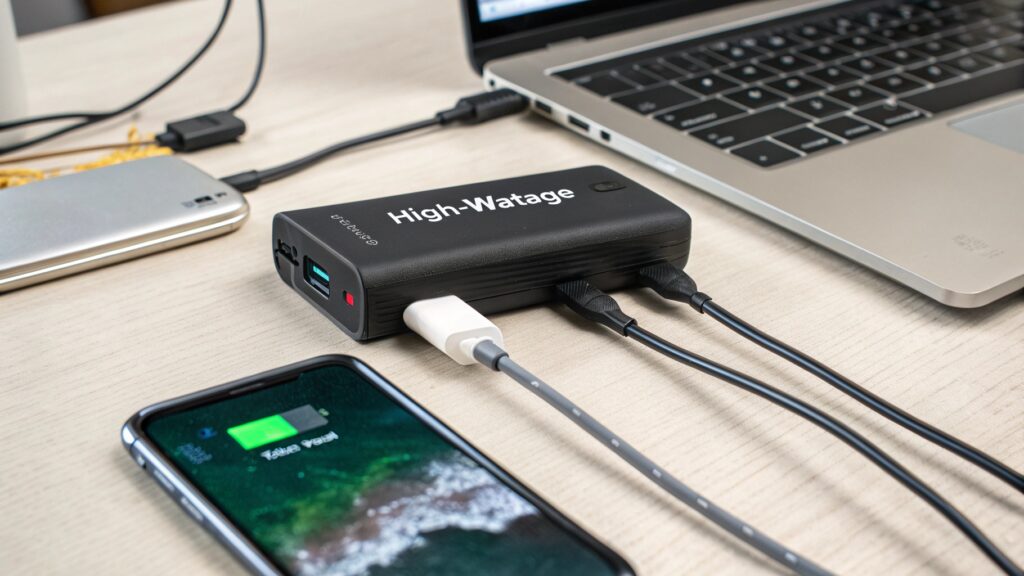
I've learned that watts are not just a number on the box. They are a measure of how quickly power can be delivered. It's like a water tap; a wider tap (higher watts) fills a bucket faster.
What does "high output" truly mean in power bank terms?
In the world of power banks, "high output" refers to the ability to deliver more electrical power, measured in watts (W) or amperes (A), to your devices in a shorter amount of time. A higher wattage power bank, like one with 18W or more, can utilize fast-charging protocols3 such as Qualcomm Quick Charge or USB-C Power Delivery (PD). This means if your smartphone supports 18W PD charging, an 18W power bank can charge it much faster than a standard 5W or 10W power bank. For example, some phones can go from 0% to 50% in about 30 minutes with an 18W charger. This speed is a clear advantage for users who are always on the go. I always look for at least 18W output in my power banks. It ensures my phone gets a quick top-up between meetings. This avoids any downtime.
How does device compatibility affect the benefit of high wattage?
The speed benefit of a high-wattage power bank is only realized if your device can actually accept that much power. Many older smartphones or basic models only support standard charging speeds, often around 5W or 10W. Connecting a 30W power bank to such a device will not make it charge faster than its maximum supported input. The phone will simply draw the power it needs, and the extra wattage from the power bank will go unused. Furthermore, while fast charging is convenient, constantly pushing high wattage to a device that is not fully optimized for it can sometimes lead to increased heat buildup. This can potentially affect the long-term health of both the power bank's battery and your device's battery. It is always wise to check your device’s charging specifications. This ensures you buy a power bank that matches its needs.
When are higher watts genuinely essential for your charging needs?
Higher wattage becomes genuinely essential when you need to charge power-hungry devices or multiple devices simultaneously. Laptops, for instance, especially those charged via USB-C, require significantly higher wattage, often ranging from 30W to 100W or more, to charge efficiently. A power bank with lower wattage simply would not be able to power a laptop effectively, or at all. Similarly, if you are charging a tablet and a smartphone at the same time, a power bank with multiple high-wattage ports can handle the combined load much better, leading to faster overall charging for both devices. For professional use, like powering a laptop on a long flight or keeping multiple gadgets charged during a trade show, a high-wattage power bank is an indispensable tool. It ensures you remain productive. It ensures you stay connected without interruption.
How Do I Know What Power Bank to Buy?
Feeling overwhelmed by the sheer number of power bank options out there? It’s tough to pinpoint the perfect one when capacities, wattages, and features vary so much. How can you confidently choose the right power bank for your lifestyle?
To choose the right power bank, you need to assess your daily charging habits and device requirements. Consider the mAh capacity for how many charges you need, the wattage output for charging speed, and features like portability and safety to find a balance that fits your specific usage scenarios.
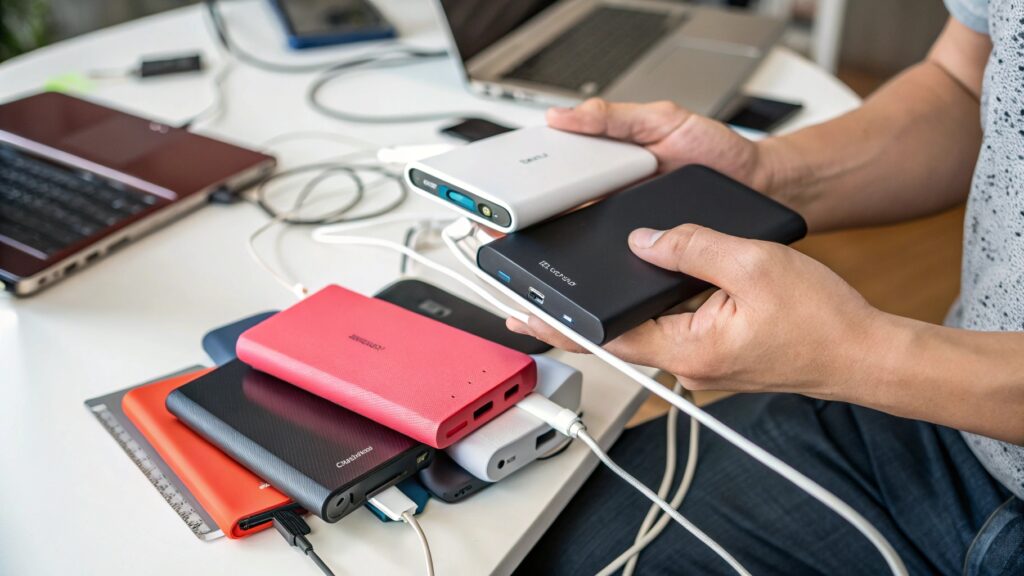
Through my work in corporate gifting, I have seen how a wrong choice in a product, even something as simple as a power bank, can cause frustration. The right choice, though, brings real satisfaction.
What steps should you take to determine your capacity needs?
The first step in choosing a power bank is to figure out your capacity needs, measured in mAh (milliampere-hours). Look at the battery capacity of the devices you plan to charge. For example, if your smartphone has a 4000mAh battery and you need to charge it twice a day, you will need a power bank with at least 8000mAh of usable capacity. Remember that power banks are not 100% efficient due to energy loss during conversion, so a 10000mAh power bank might only deliver around 6000-7000mAh of actual power. If you only need occasional top-ups or primarily charge small devices like earbuds, a smaller 5000mAh power bank might be enough. For heavy users with multiple devices or laptops, you will need 20000mAh or more. I always advise clients to estimate their daily device usage. This helps them determine the true capacity they require.
How do you match output wattage with your devices for optimal charging?
Next, you need to match the power bank's output wattage to your devices. Check the charging specifications of your smartphone, tablet, or laptop. Most modern smartphones support fast charging at 18W or higher (e.g., USB-C PD or Quick Charge). If your phone supports 25W fast charging, getting a power bank with at least 25W output will give you the fastest charging speeds. For laptops, you will typically need a power bank that supports 30W, 45W, 60W, or even 100W Power Delivery, depending on your laptop's requirements. If you primarily charge older devices that do not support fast charging, a high-wattage power bank might be overkill. It might also be more expensive than you need. I always make sure the power banks I source for clients have output ports that align with their recipients' common devices. This ensures maximum utility.
What other features should you consider beyond capacity and wattage?
Beyond capacity and wattage, several other features can make a power bank more suitable. Portability is a big one; if you plan to carry it in your pocket daily, a compact and lightweight model is crucial. If it is for a backpack, size might be less of an issue. The number and type of ports are also important. Do you need multiple USB-A ports for older devices? Or do you primarily use USB-C? Some power banks offer wireless charging, which can be convenient for compatible phones. Safety features like overcharge, over-discharge, short-circuit, and overheating protection are vital. Look for reputable brands that prioritize safety. Lastly, consider the build quality and design. A durable power bank will last longer. I always stress these additional considerations. They ensure the power bank is not just functional but also a pleasure to use.
Conclusion
Choosing the right power bank means balancing capacity, wattage, and features with your personal needs. By understanding these factors, you can pick a reliable portable power source that truly keeps you connected.


